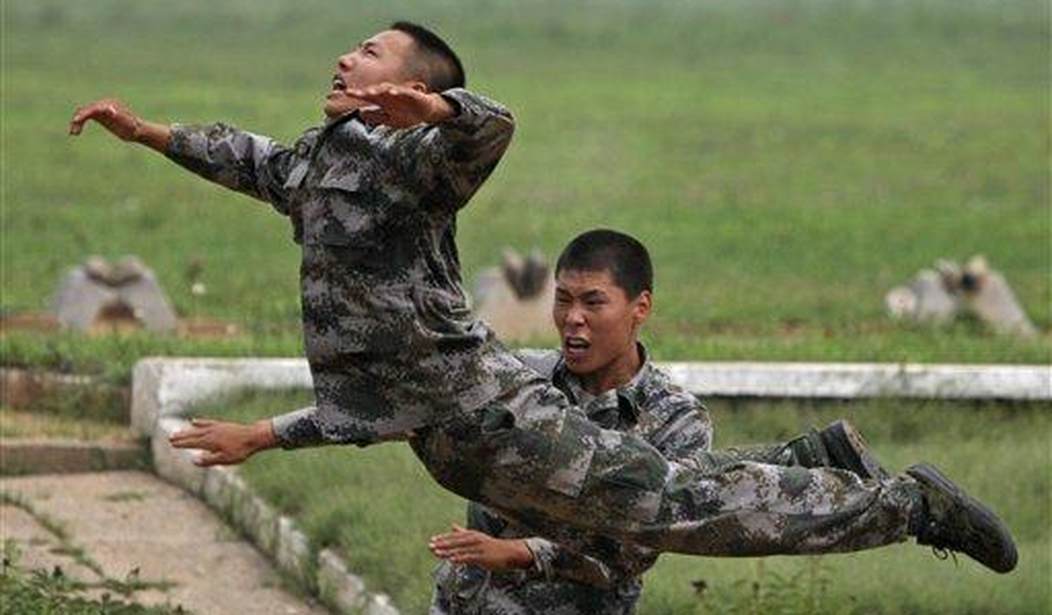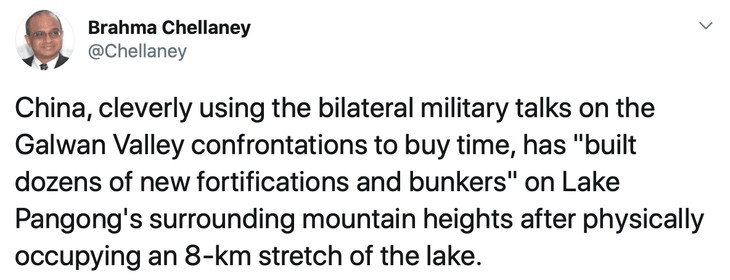Chinese troops were reportedly in “panic mode” after a recent border clash with Indian troops high in the two nations’ disputed Himalayan border area.
The Sunday Guardian’s Abhinandan Mishra reported on Sunday that “Chinese soldiers were in a state of shock and fear after the Indian soldiers replied with ‘sheer fighting force’ to the treacherous attack by the Chinese.”
The two countries share a largely undemarcated and sometimes disputed border in the Himalaya mountains, where the peaks can reach 28,000 feet. While the area has been largely quiet in recent years, the two nuclear-armed powers have engaged in sometimes-deadly border clashes since May 10.
Galwan Valley: The soldiers killed in the India-China border clash
The Sunday Guardian report details the most recent fighting, in which China’s PLA land forces may not have acquitted themselves very well:
Inputs accessed by The Sunday Guardian post the debriefing of these 10 men, revealed that the outnumbered and “unarmed” (as the rules required them to be) Indian troops, rather than retreating in view of the huge number of Chinese soldiers, grabbed the improvised clubs and rods that the Chinese were using to batter Indian soldiers, and used the same to kill “at least” 20 Chinese soldiers and officers at patrol point 14.
“This was one reason for the high morale of our troops who came back to us on Thursday. Our men were captured after they chased the Chinese into their area of domination, with the intention to kill them after hearing of the loss of their CO, Colonel Santosh Babu. The Chinese soldiers, seeing the unexpected attack from our men, started fleeing and running back to their area and were followed by our men, who were then captured”, the official stated.
The debriefing of the 10 men has also revealed that the Chinese soldiers were in a state of shock and fear after the Indian soldiers replied with “sheer fighting force” to the treacherous attack by the Chinese. During the next 60 plus hours, the Chinese soldiers were highly anxious about a possible retribution from the Indian side and were in “panic-mode”.
My gut reaction is to take such claims with a grain of salt, but as crazy and difficult as mountain fighting is — even in a “mere” border clash — maybe anything is possible.
#China PLA's recent propaganda video, showing troops patrolled on foot for 6 hours in Tibet, and they had already drunk all bottled water. They had to eat hardtack with snow.pic.twitter.com/RggcEo59Dn
— W. B. Yeats (@WBYeats1865) June 21, 2020
China would seem to hold most of the advantages in this spring’s border clash. They literally hold the high ground — the Tibet plateau — on their side of the Himalayas. And China has made great strides to improve the local infrastructure, which is much more modern than India’s.
Also, while India has enjoyed robust economic growth in the last two decades, China’s growth has still left them in the dust.
Also, China’s military budget dwarfs India’s by a factor of almost 4 to 1: $266 billion to $71 billion.
But lacking any major external threats by land, Beijing has concentrated its defense buildup on the People’s Liberation Army air and naval forces. By comparison, the ground forces have been lacking.
So it is possible that faced with unexpectedly fierce resistance from the Indian Army during the weekend’s renewed border clash, Chinese troops simply failed.
Whatever might or might not have happened over the weekend, Beijing seems to be getting what it wants.
The Times of India reports:
There is still some lack of clarity about the exact ground situation in the Galwan Valley region of eastern Ladakh. But there is little doubt that Chinese soldiers have built dozens of new fortifications and bunkers after physically occupying an almost 8-km stretch of what India considers its own territory along the Pangong Tso since early-May.
Chinese troops have also taken control of the heights to dominate ‘Finger-4 to 8’ (mountainous spurs) area on the north bank of Pangong Tso, adroitly utilising the time when bilateral military talks were underway on the troop confrontations at Patrolling Points 14, 15 and 17 in the Galwan Valley and Gogra-Hot Springs areas.
More to come from the 2020 China-India Border Clash, I’m sure — none of it good.











Join the conversation as a VIP Member